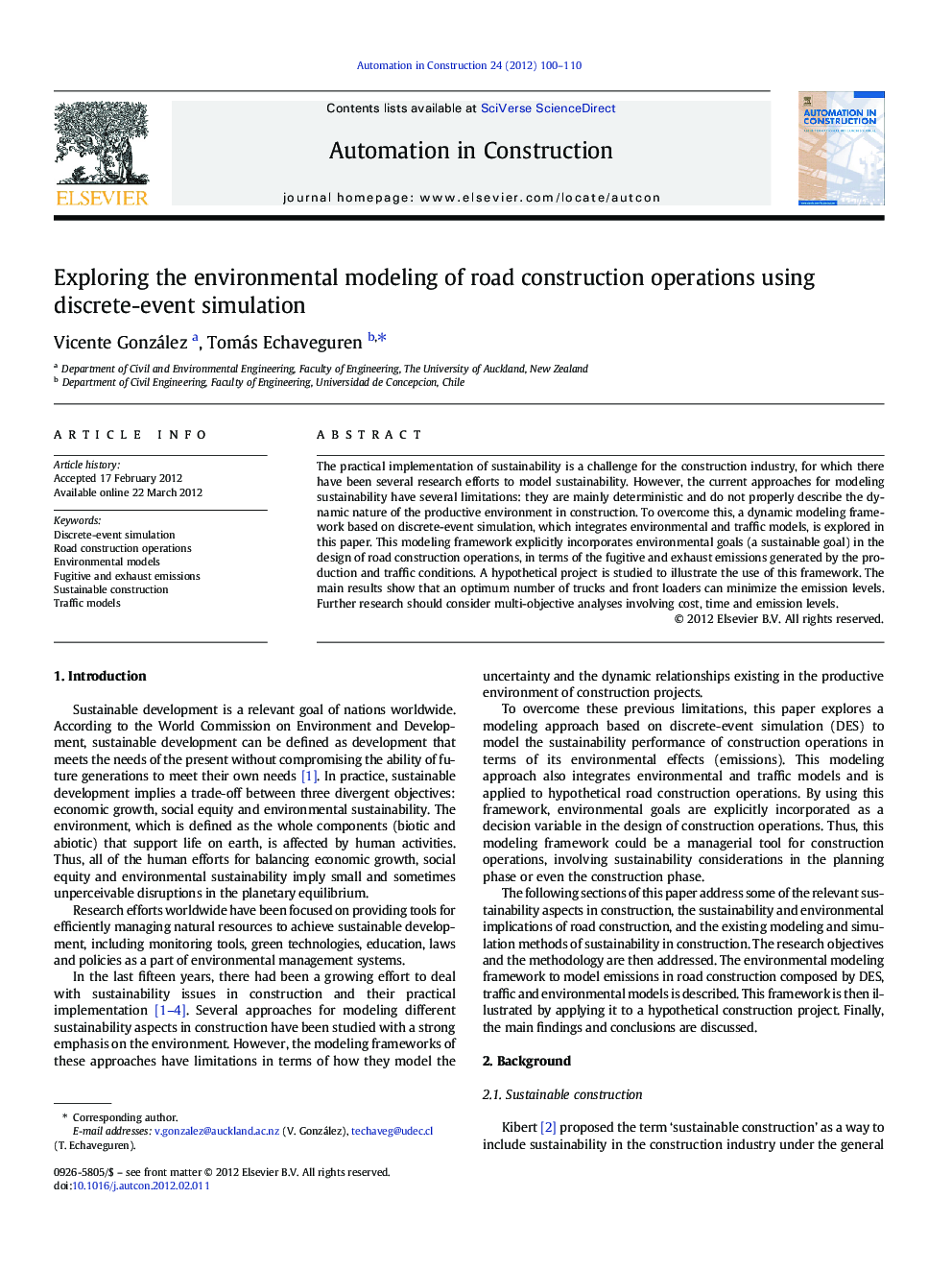| کد مقاله | کد نشریه | سال انتشار | مقاله انگلیسی | نسخه تمام متن |
|---|---|---|---|---|
| 246850 | 502392 | 2012 | 11 صفحه PDF | دانلود رایگان |

The practical implementation of sustainability is a challenge for the construction industry, for which there have been several research efforts to model sustainability. However, the current approaches for modeling sustainability have several limitations: they are mainly deterministic and do not properly describe the dynamic nature of the productive environment in construction. To overcome this, a dynamic modeling framework based on discrete-event simulation, which integrates environmental and traffic models, is explored in this paper. This modeling framework explicitly incorporates environmental goals (a sustainable goal) in the design of road construction operations, in terms of the fugitive and exhaust emissions generated by the production and traffic conditions. A hypothetical project is studied to illustrate the use of this framework. The main results show that an optimum number of trucks and front loaders can minimize the emission levels. Further research should consider multi-objective analyses involving cost, time and emission levels.
► There exist an optimal number of trucks and front loaders that minimize emissions.
► An optimum number of 3 trucks allows to minimize exhaust emissions.
► This research established correlate parameters of production cycles and emissions.
► The study integrates discrete event simulation, traffic and environmental models.
Journal: Automation in Construction - Volume 24, July 2012, Pages 100–110